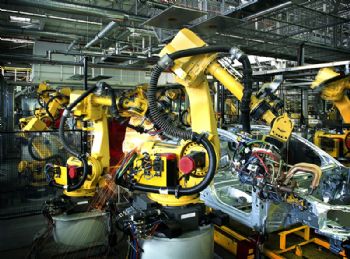
While fears of recession, trade frictions and Brexit seem to be slowing the economy in Europe, the overall picture for the industrial robot market remains bright.
Indeed, a strong growth trend is continuing in some parts of Europe. Shinichi Tanzawa, president and CEO of Fanuc Europe Corp, said: “In the first half of our current fiscal year, our order volume in all Europe rose by a double-digit percentage number, and we expect the expansion to continue, although it might slow down a bit.”
According to a recent report by the International Federation of Robotics (IFR), the number of industrial robots shipped into the European market is estimated to have gone up by 7% in 2018.
For the years 2019 to 2021, the IFR predicts an average annual growth rate of 10%.
Mr Tanzawa added: “In the past couple of years, the industrial robot market in Europe has been growing at a very high speed; and while we might now see short-term consolidation in some regions, the main drivers of automation are intact — a lack of skilled workers, an increase of labour costs and the development of ever more-capable industrial robots.”
He also says that one of the most promising trends throughout Europe is collaborative robots (cobots).
“While big international manufacturers have been experimenting with cobots in their production for some years, the technology is becoming more widespread. We increasingly see more demand coming from small and mid-size companies — and even from companies that have not previously been using robots in their production.”
While a handful of robot makers are competing in the cobot market, Fanuc says it offers the widest range of models — from the small CR-4iA that can handle loads up to 4kg and undertake, for example, the transfer and assembly of small electrical parts, up to the CR-35iA, which can lift loads up to 35kg and assist workers in heavy lifting tasks without the need of special safety equipment (such as protective fences).
“We expect robotisation to support the growth of the European economies further, but while automation has helped to partly cover the shortage of skilled workers, a lack of specialists is starting to hold back the process of automation itself.
"In most European countries that we cover, we see a lack of robot programmers and engineers — a situation that is hampering companies from automating their production sites at the pace they would like to.”